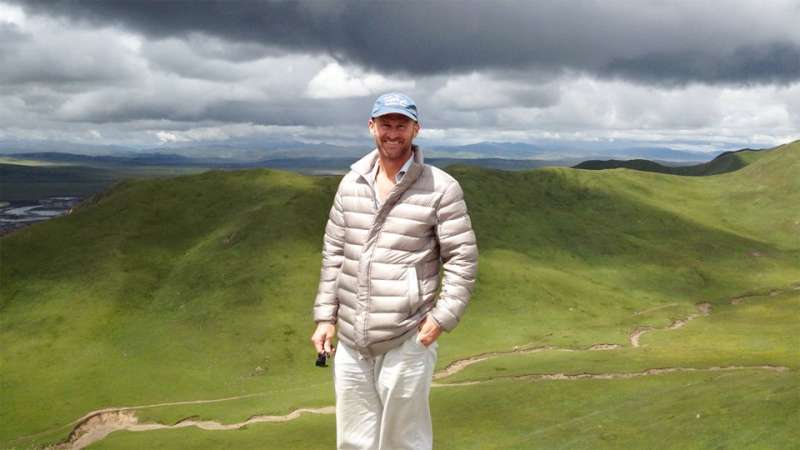High-altitude birds evolve similar traits via different mutations

On the Himalayan-enveloped Tibetan Plateau and the Altiplano plateau of South America – the world's two highest tabletops – a select few bird species survive on 35 to 40 percent less oxygen than at sea level.
All extreme-altitude birds have evolved especially efficient systems for delivering that precious oxygen to their tissues. But a new study led by the University of Nebraska-Lincoln and Chinese Academy of Sciences has found that these birds often evolved different blueprints for assembling the proteins – hemoglobins – that actually capture oxygen.
Published in the Proceedings of the National Academy of Sciences, the study found that many species from the two plateaus underwent different mutations to produce the same result: hemoglobins more adept at snaring oxygen from the lungs before sharing it with the other organs that depend on it.
Those mutational differences often emerged even among closely related species residing on the same plateau, the study reported.
"You could imagine, just because of the different ancestral starting points, that the Tibetan birds maybe all went one (mutational) route, and the Andean birds typically did things a different way," said co-author Jay Storz, Susan J. Rosowski Professor of Biological Sciences at Nebraska. "But that's not what we saw. Across the board, there weren't really any region-specific patterns.
"In both cases, it seems like there were many different ways of evolving a similar alteration of protein function."

Like all proteins, hemoglobin consists of intricately folded chains of amino acids. The interactions among those amino acids dictate the structure of a protein, which in turn determines its properties – how readily it binds with and releases oxygen, for instance. But a mutation can effectively swap out an amino acid for a chemically distinct version at the same site in the protein, potentially modifying its behavior in the process.
After comparing the ancestral vs. modern hemoglobin proteins of nine species that inhabit the Tibetan Plateau, the team did identify two cases in which distantly related species underwent identical, functionally important mutations. Yet in the other instances, species evolved different ways to build a better hemoglobin.
The latest findings reinforce a 2016 Storz-led study published in the journal Science, which was the first to establish that vertebrate species can follow different molecular-level paths to reach the same adaptation. That study, which investigated birds only from the Andes, inspired the team to follow up with its comparison of Andean and Himalayan species.
"Birds that have adapted to high-altitude conditions from all these different mountain ranges have repeatedly evolved hemoglobin with elevated oxygen affinities," Storz said. "At that (functional) level, everything is highly repeatable, and there's a very striking pattern of convergent evolution. But in terms of the actual molecular underpinnings, there's far less predictability, and it's clear that there are many possible changes that can produce the same functional outcome."
More information: Xiaojia Zhu et al. Divergent and parallel routes of biochemical adaptation in high-altitude passerine birds from the Qinghai-Tibet Plateau, Proceedings of the National Academy of Sciences (2018). DOI: 10.1073/pnas.1720487115
Journal information: Proceedings of the National Academy of Sciences , Science
Provided by University of Nebraska-Lincoln


















